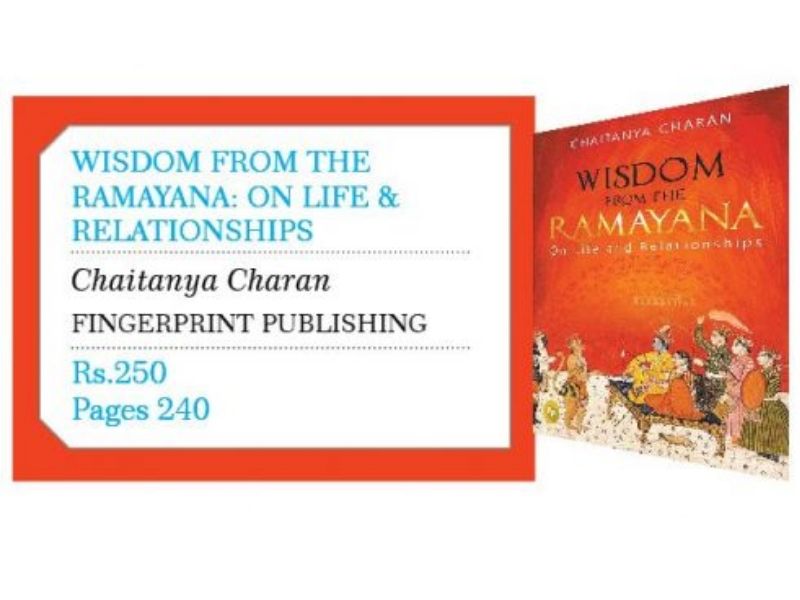
No matter how old you are, if you are Indian, you can probably recall the first time you heard the story of Rama. The memory could be your grandmother’s voice in a room lit only by an oil lamp, or a book such as Rajagopalachari’s rendition, or pictures in the Amar Chitra Katha or the televised version. Every Indian household has children who have grown up hearing tales from the Ramayana.
To those with a humanities background, the idea of many renditions of the Ramayana has never been better captured than in Ramanujan’s essay ‘Three Hundred Ramayanas: Five Examples and Three Thoughts on Translation’ which starts with the memorable lines, ‘How many Ramayanas? Three hundred? Three thousand?’ The epic is indeed one that means different things to different people. Every one of us has his favourite character or event in this glorious epic. Lest we forget, the spell of the Ramayana is not restricted to India but has its versions in the form of ballet and theatre in many South East Asian cultures. Its appeal is universal.
The premise of Chaitanya Charan’s book is that there can be no greater source of inspiration than the life of Rama. The book seeks to help the reader improve his relationships (and the way he perceives life) by following the sublime values of the Ramayana.
The author begins by setting the context of the teaching. Rama is of course Vishnu in human form descended for the express purpose of ending Ravana’s atrocities. He is unaware of his divinity though. Rama is human and subject to the moral forces of his milieu, and is influenced by his relationships with others. The reader can, therefore, identify with the characters of the epic.
Nineteen incidents from the epic are chosen to highlight difficulties in relationships common to us all. Events such as the Manthara/Kaikeyi nexus (harmful advice, improper motives and fear of loss of power and position); Sugriva and Vaali (lack of communication and understanding); Rama’s acceptance of Shabari’s gift (understanding of intention) and Vibhishana’s desire to do right, conflicting with his loyalty to his brother, are explained so that the reader is forced to reflect on his own relationships in a new light.
The solutions appear as truisms. This is inevitable; after all, we know the answers — how to change our behaviour is the dilemma. The author’s approach is to link intellectual understanding to an emotion that will drive the change.
However, most readers have some prior knowledge and understanding of the epic. Consequently, they have preconceived notions and explanations for motives of the characters. That apart, as with life, contradictions abound not just in the stories but in ourselves as well. When does compassion become weakness? When does faith in one’s beliefs become an inflexible point of view? These and several other questions don’t have simple answers.
Another interesting issue covered in this book is the eternal question of fate. Is our behaviour pre-ordained or is it something we can shape? The author uses the example of a game of cards — we have no choice over the cards we are dealt, but how we play them is under our control. The same analogy can be found in S. Radhakrishnan’s illuminating introduction to his commentaries on the Bhagavad Gita written for the common reader.
How emotions sway the behaviour of characters in the Ramayana and how they find a solution by dedicating their prayers to the Lord is the common theme of these stories. Surprisingly, the author does not quote one of the famous verses of the Gita that deals with kama and krodha (3.37) though he does mention verses from the Gita — all of which deal with Bhakti Yoga.
The most controversial parts of the Ramayana — Rama’s slaying of Vaali and his treatment of Sita at the end of the war is deftly explained by the author. The slaying of Vaali is explained as the hand of fate with Rama’s friendship with Sugriva being foreordained. Sita’s trial by fire is explained by elaborating the context.
The book’s major limitation is that its approach to relationships is purely at a transactional level. There is little or no attempt to steer the reader towards self-examination in the areas of motives, values, concept of self, etc.
Despite these limitations, this work is useful and will help readers to address moral dilemmas with open mind. The challenge of managing relationships is accurately captured in a quote attributed to the American philosopher and psychologist William James: ‘When two people meet there are six people present. There is each man as he sees himself, each man as the other person sees him and each man as he really is.’
Life is complex, indeed. But human nature doesn’t change. This timeless epic highlights behavioural norms that are familiar even today and its teachings are relevant and contemporary. Truly has it been said: no telling of the Ramayana is ever wasted.
Ravi Menon (The Book Review, October)